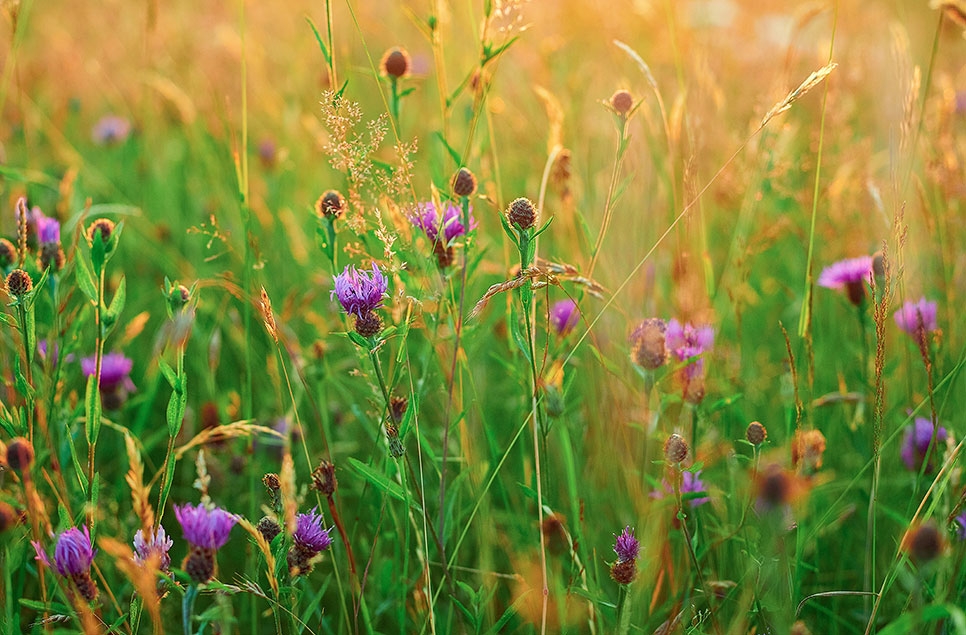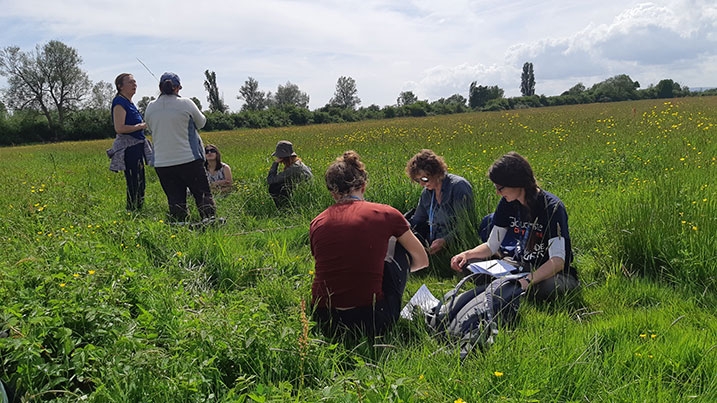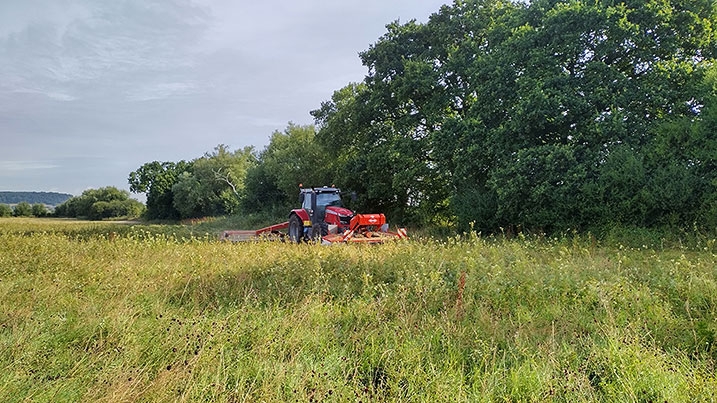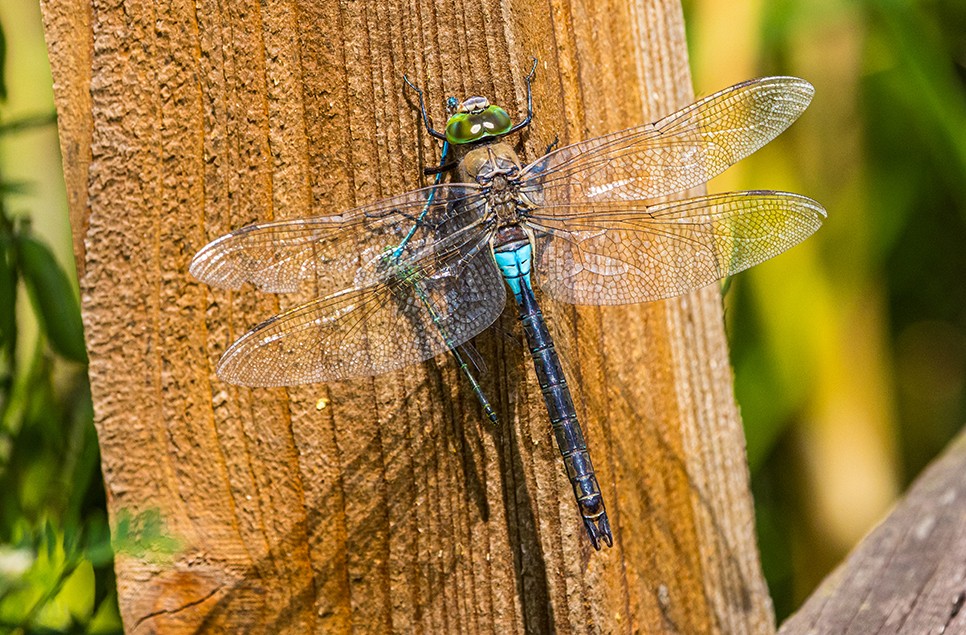Flourishing Floodplains project celebrates project successes
The Severn and Avon Vales were once a large, connected mosaic of floodplain meadows, marshes and small wetlands teeming with life. Sadly, over 88% of this habitat has been lost or has reduced biodiversity. But, as floodplains across the Severn and Avon Vale reawaken this spring, a ground-breaking landscape-scale project to promote their ecological health is concluding.

Flourishing Floodplains was delivered in partnership with WWT, the Floodplain Meadows Partnership at the Open University and Farming and Wildlife Advisory Group South West. The partners were united by a vision of bigger, better and more connected wetlands, providing a haven for wildlife and helping local people connect with nature.
Since summer 2021, the project has been busy restoring habitat, conducting research to support endangered species such as eel and curlew, and creating local advocates with skills and knowledge to help protect the biodiversity of these vital wetlands. As the project concludes at the end of March 2023, Flourishing Floodplains is celebrating a wide range of positive outcomes.
Species-rich Floodplain Meadows

On a national scale, only 1,100ha (over 2000 football pitches) of species-rich floodplain meadow remain in England and Wales. Approximately 10% of this precious habitat was known to be located in the Severn and Avon vale. The Flourishing Floodplains project trained 27 volunteer botanists, who made botanical surveys of almost 650 hectares of floodplain grasslands across the project area in June and July last year, in a race against time before the hay was cut.
These passionate volunteers discovered an additional 28 sites with 120 hectares of good quality, species-rich floodplain meadows not previously recorded. In addition, they identified more than 300 hectares of grasslands as suitable for restoration with the potential to more than double high quality floodplain meadow habitat in the region.
The team also collected over 500 soil samples for test the carbon content. The analysis revealed that that floodplain fields farmed with arable crops, have less less organic carbon stored in the soil compared with ancient floodplain meadows.
Local Farming Support

Support from local farmers has been key for Flourishing Floodplains. Farmers joined events such as meadow walks, pond and wetland restoration visits, and workshops to learn about regenerative farming practices. And the project team made over 50 farm visits giving detailed advice on soil health, climate resilience, water management, and wildlife friendly farming.
On 7 sites, farmers and landowners worked with the project to restore 36 hectares of floodplain meadow habitat, sourcing species rich meadow seeds direct from local ancient floodplain ‘donor’ meadows. The seeds were either harvested and sown via drilling, or transplanted as green hay that was strewn across the field to be restored. In some meadows, individual plugs of wildflowers were hand-planted by dedicated volunteers.
Ponds for wildlife

Ponds form an essential part of a healthy, biodiverse floodplain and have been a focus for Flourishing Floodplains as they provide an important natural larder for wildlife such as birds, bats and amphibians. But mapping research undertaken as part of the project showed a net loss of 39% of farmland ponds since 1900 in the Severn and Avon Vale. Flourishing Floodplains was able to restore or create 42 farmland ponds and small wetland features.
Pilot survey studies were also carried out to investigate the nutrient rich food source created by flying insects (such as mayflies, damselflies and midges) as they emerge from ponds in summer. Researchers monitored foraging behaviour of bats and swallows over ponds and measured how far the insects themselves travelled. Further studies used tiny amounts of a safe but unusual form of nitrogen (15N) added as an inert chemical label to four farm ponds. This nitrogen is naturally taken up by plants and algae, then eaten by aquatic insects. Eventually the chemical label of the pond’s wildlife can be tracked throughout the wider food web.
In addition, Flourishing Floodplains researchers and citizen science volunteers visited 100 ponds last summer to survey for the presence of critically endangered European eel. Back in the laboratory, researchers used cutting-edge environmental-DNA analysis to search for even the tiniest traces of DNA from these hard-to-find fish. The eel DNA is found in cells the eels shed or excrete into the pond. Eels were positively detected in more than 35% of the ponds surveyed. Further research will focus on the characteristics of the ponds that the eels favoured.
Supporting the curlew

Flourishing Floodplains also provided critical funding for curlew recovery research on the 35 breeding pairs of curlew using the Severn and Avon Vale. Five birds were fitted with GPS tags giving incredible new insights into their daily movements of a bird described as the UK’s highest conversation priority. Curlew nests were painstakingly located by fieldworkers and then fitted with temperature probes and even nest-cams. Careful nest monitoring has helped researchers better understand the predation pressures faced by Curlew that are causing such poor and unsustainable survival rates for chicks every year.
Flourishing Floodplains has created a huge breadth of activity to restore floodplain habitats and boost wildlife within the farmed landscape. Over 1000 members of the public also took part through talks, webinars and creative activities inspired by floodplain nature. The project was funded by the Green Recovery Challenge Fund and would not have been possible without the generous support of all the farmers, landowners, community groups and volunteers who have taken part.
Find out more


